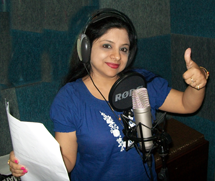1. Microphone (Condenser Preferred)
A good condenser microphone is your most important investment. It captures rich, clear vocals, which is essential for any professional recording. Condensor mic needs proper sound proofing and sound absorption. Some popular choices in 2025 include:
Audio-Technica AT2020 / AT2035
Rode NT1-A / NT2-A
Shure SM7B (also popular for podcasting and streaming)
If you are having a home set up then go for dynamic mic
Shure SM 5
2. Laptop/Desktop Computer
A reliable computer is crucial. You don't need a high-end machine, but it should be fast enough to run DAWs (Digital Audio Workstations) smoothly and have USB or XLR interface compatibility.
Recommended specs:
At least 8GB RAM
SSD storage for faster processing
Windows 10/11 or macOS Monterey/Ventura
3. Headphones (Closed-Back)
To monitor your voice clearly and avoid sound bleed, use closed-back studio headphones. Examples include:
Audio-Technica ATH-M50x
Behringer
Avoid using regular phone or Bluetooth earphones for professional voice-over work.
4.Audio Interface
This is what connects your mic to your computer (unless you’re using a USB mic). A good audio interface ensures clean audio and phantom power for condenser mics. Options include:
Focusrite Scarlett 2i2 (3rd/4th Gen)
Steinberg UC12 or UC 22
PreSonus AudioBox USB
5. Recording & Editing Software
Many free and paid software options are available:
Audacity (Free & beginner-friendly)
Adobe Audition (Professional)
Reaper (Lightweight & powerful)
GarageBand (for Mac users)
These let you record, edit, clean up, and export your voice work with ease.
6. Pop Filter & Mic Stand
A pop filter blocks plosive sounds ("p", "b", etc.) that can distort recordings.
A mic stand or boom arm helps position your mic at the right height and angle.
7. Sound Treatment (Not Soundproofing!)
You don’t need a fully soundproof room for using dynamic mic, but basic sound treatment is vital. Use:
Foam panels
Thick curtains or blankets
Carpets or rugs
Record in a small, quiet room – even a closet with clothes can work wonders.
For using condensor mic the noise level in the room you are using shouldd be fairly low. The sound quality is always better with condensor but this mic is sensitive to noise
8. High-Speed Internet Connection
In 2025, many clients prefer live directed sessions via Zoom, Skype, or Source-Connect. Ensure you have:
* Stable broadband or fiber internet
* Good upload speed (at least 40 Mbps)
* Backup internet like mobile hotspot, if possible
9. Scripts & Demos
Always have:
A few well-recorded voice demos (in different tones/styles)
A ready-to-read script (for practice and testing levels)
PDF reader or tablet for reading scripts without keyboard noise
10. Final Tip: Keep It Simple but Professional
You don’t need to break the bank to set up a home voice-over studio in 2025. Focus on clean audio, minimal noise, and consistent delivery. Many successful artists work from home studios with affordable but effective gear
To buy the above you can find amazon links HERE
Need help setting up or want a gear list tailored to your budget? Reach out to us – we’re happy to help! |
